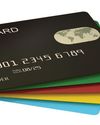Rising interest rates and new tax rules mean taking a different approach to how you shop for loans and manage your debt.

A lot of financially savvy people make a distinction between good debt and bad debt. Good debt is used to finance goals that will improve your net worth—such as a home purchase, a college education or a small business. Good debt is even better if it carries a low interest rate and is tax-deductible. Bad debt is the kind you incur to buy things you can’t afford with your paycheck—the big-screen TV you put on a credit card or the Caribbean trip you paid for with your home-equity line of credit. In some people’s book, it’s a bad idea to borrow to buy any depreciating asset, including a car.
But even good debt turns bad when you overindulge, as happened in the years leading up to the financial crisis. The bursting of the housing bubble and the stock market bust forced many Americans to go on a debt diet, and in the last decade, even though credit has been historically cheap, we’ve been pretty careful borrowers. Household debt has increased since the Great Recession, but that’s largely a desirable side effect of the strong economy and a healthy relaxation in lending. Mortgage balances have been rising (although they are still way below the peak reached in 2008), and studentloan, auto-loan and credit card debt levels have also gone up.
There are a few worrisome trends: Borrowers age 60 and older now hold 22.5% of total outstanding balances for all types of loans, up from 15.9% in 2008. Older borrowers are also taking on more student-loan debt to help pay for the education of children and grandchildren. The average amount of student-loan debt owed by borrowers age 60 and older nearly doubled from 2005 to 2015, to $23,500, according to the Consumer Financial Protection Bureau. Another worry: Among younger student-loan borrowers, delinquencies are rising.
هذه القصة مأخوذة من طبعة January 2019 من Kiplinger's Personal Finance.
ابدأ النسخة التجريبية المجانية من Magzter GOLD لمدة 7 أيام للوصول إلى آلاف القصص المتميزة المنسقة وأكثر من 9,000 مجلة وصحيفة.
بالفعل مشترك ? تسجيل الدخول
هذه القصة مأخوذة من طبعة January 2019 من Kiplinger's Personal Finance.
ابدأ النسخة التجريبية المجانية من Magzter GOLD لمدة 7 أيام للوصول إلى آلاف القصص المتميزة المنسقة وأكثر من 9,000 مجلة وصحيفة.
بالفعل مشترك? تسجيل الدخول

HOW INFLATION ADJUSTMENTS WILL AFFECT YOUR TAXES
We looked at IRS rules for 2025 on everything from tax brackets to how much you can save in retirement accounts.

GUARD AGAINST IDENTITY THEFT IN THE NEW YEAR
Scammers are getting better at impersonating legitimate businesses.

SHOULD YOU BUY PET HEALTH INSURANCE?
You can fend off big veterinary bills with a policy that covers your furry companion.

THE LOWDOWN ON BUYING A VACATION HOME
If you return to a beloved destination again and again, purchasing a home there may be a smart move-but don't overlook the costs and effort that go into it.

HOW COUPLES CAN MANAGE DIFFERING RETIREMENT TIME LINES
Staggered retirement is increasingly common, but it can create financial and emotional challenges.

AVOID THESE CREDIT MISSTEPS
KIPLINGER ADVISOR COLLECTIVE

WHAT YOU NEED TO KNOW ABOUT WORKING FOR YOURSELF
Whether you're looking for a side gig or planning to start your own business, it has never been easier to strike out on your own.

My Top 10 Stock Picks for 2025
SINCE 1993, I have offered an annual list of 10 stocks with the potential to beat the market in the 12 months ahead. My 2024 selections notched the highest return ever: an average of 48.9%. I beat the S&P 500 index by 10.8 percentage points, and every one of my stocks was up-six by more than 30%.

WHAT MAKES AN ETF SUCCESSFUL?
EXCHANGE-traded funds have exploded in popularity, with the industry now reaching the milestone of $10 trillion in assets.

TIPS FROM INSIDERS
When corporate insiders buy or sell, it can offer clues on whether you should do the same.